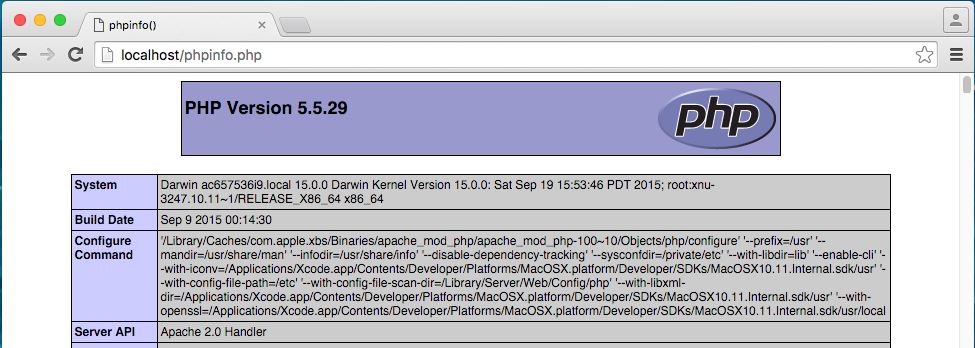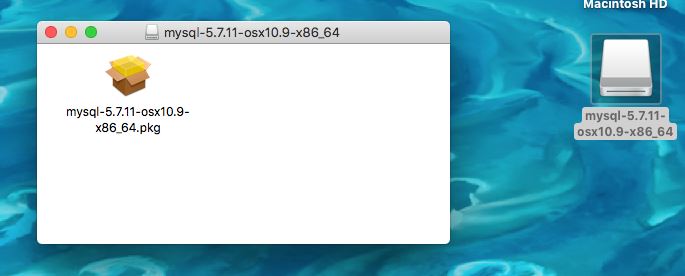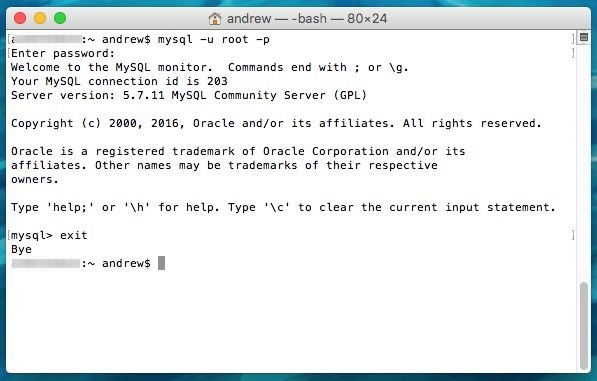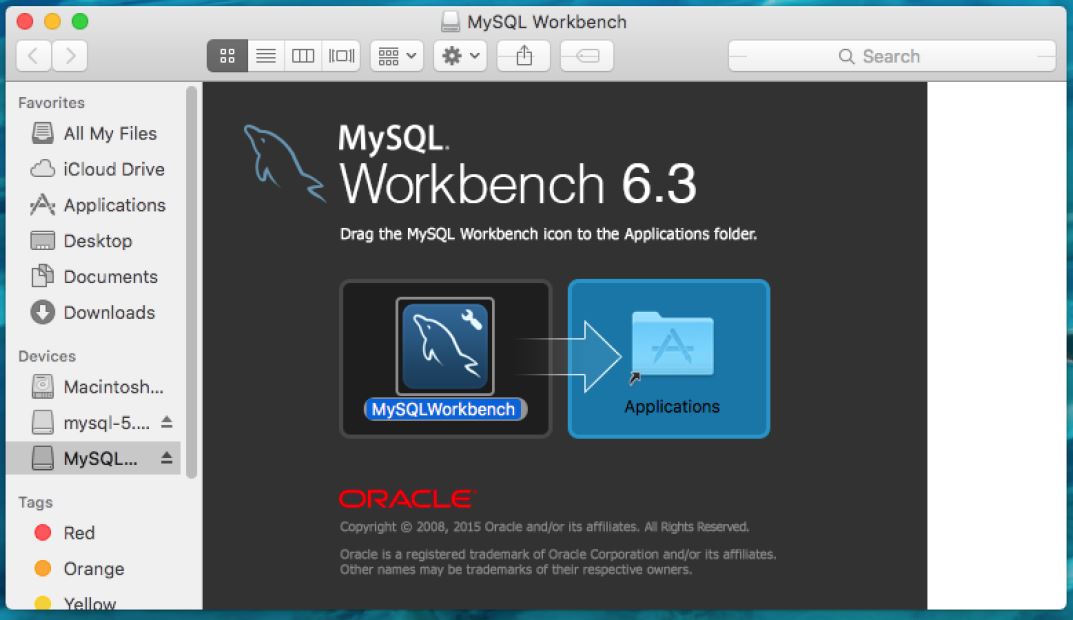Download Mysql for Mac 10.11.6
A few months ago, I wrote most how to install MySQL on Windows with IIS. At present I want to show you how to create an AMP spider web programming stack (Apache, KySQL & PHP) on Mac Os Ten. As with Windows, yous could but get with a ready-fabricated development surroundings like MAMP but, if you're going to be doing real database and web design work with MySQL, information technology's best to know how everything works.
Background
For this demonstration, I'one thousand going to be using Mac OS X El Capitan (five.ten.11), the latest version as of this writing. My installation surroundings is a hosted Mac server with 1 GB of RAM and 40 GB of deejay space. I will exist demonstrating the procedure using the Concluding commands.
Dissimilar Windows, OS 10 already includes the Apache web server and PHP language pre-installed so it's a much simpler process to ensure that everything is working together. Y'all volition need root access in order to install and configure the components.
Establishing Root Admission
Open the Terminal environment from the Utilities (Get >> Utilities from summit card and then select Terminal).
In Os X, it is possible to get root access by activating the root user account with dsenableroot. Improper use of this command can open your system to security issues, however. It'south safer to use sudo (southwarduperuser do) on the individual commands or temporarily switch users with sudo su –.
For more information on working with the root user, seehttps://back up.apple.com/en-u.s.a./HT204012.
Activating Apache
Yous can activate Apache simply by issuing either of the the following commands in the Last.
sudo apachectl showtime
sudo apachectl restart
The restart command will starting time Apache even if it's stopped. There won't exist any notification on the command line as to the change in condition so you will need to verify that Apache is working by opening a spider web browser window and navigating to the following address:
http://localhost
If everything is working, you should go a elementary white screen with the heading "It works!" indicating that the web server is up and running.
Configuring PHP and Apache
The Apache configuration file (httpd.conf) must exist changed to load the necessary PHP module so that PHP pages tin exist served upwardly. This is easily done from the Terminal. Showtime, you volition need to change to the Apache directory and you should brand a backup of the file.
cd /etc/apache2/ cp httpd.conf httpd.conf.bak
To edit the file, you can use the command line editor six or the Mac TextEdit programme, either of which tin be opened from the Terminal.
half-dozen httpd.conf
open -a TextEdit httpd.conf
If you're non familiar with vi (pronounced "vee-eye"), it's a powerful command-line editor mutual to UNIX-based systems and you tin can read more about using it on the Academy of Washington'southward site athttps://www.washington.edu/computing/unix/vi.html. If yous cull the TextEdit command from above, the TextEdit program will open outside the Terminal and will load the configuration file for you lot to work with.
In either editor, y'all'll need to detect the following line:
#LoadModule php5_module libexec/apache2/libphp5.so Remove the hashtag (#) from the get-go of the line to un-annotate it and and so save the file. You will then need to restart Apache with the following command.
sudo apachectl restart
To verify that PHP is working with Apache, y'all can create a phpinfo.php file in the web document root folder where the localhost files reside. On Bone X, this folder is more often than not \Library\WebServer\Documents. Create a elementary text file in that folder with the post-obit text on the first line:
<?php phpinfo(); ?>
Save the file with the proper noun phpinfo.php and and then load the file in your spider web browser.
http://localhost/phpinfo.php
If everything is working, you should then get the PHP settings screen.
Article continues after ad
Installing MySQL
The latest versions of MySQL Community Server are available in TAR and DMG format from http://dev.mysql.com/downloads/mysql. I recommend the DMG format which is a disk image that can exist mounted as a drive attainable from your Desktop.
The paradigm file contains a single PKG file which you can double-click to run the installation wizard. Every bit of this writing, the latest version, 5.7.11 is labeled for Bone 10 ten.10 simply I was able to install it with no problems on El Capitan (10.11). During the installation, you lot volition be asked to create a password for the root MySQL user – make sure to write this password downwardly somewhere safe!
After the installation is finished, it's a good idea to add the MySQL program directory to your PATH statement and so you tin can run information technology from whatever directory. Employ the following line in the Last to do this.
export PATH=/usr/local/mysql/bin:$PATH Then, try logging in to your new MySQL server as the root user.
mysql -u root -p
It's also a practiced idea to run mysql_secure_installation which does the following to secure your database server:
- Enables you to modify the root password that was chosen during installation.
- Provides the selection to remove the anonymous MySQL user.
- Provides the option to disable remote logins.
- Allows you to remove the examination database and access to it.
- Reload the privilege tables
Now that MySQL is working, information technology needs to exist able to work with PHP. This is done past creating a link to the MySQL socket file which will let PHP to communicate with the server. Entering the following commands in the Final will create a new MySQL directory in the system Var directory and a symbolic link in that directory to the socket file.
cd /var mkdir mysql cd mysql ln -s /tmp/mysql.sock mysql.sock When the MySQL installation is finished, you should be able to Admission the MySQL preference pane shown in Effigy 2.11 from the System Preferences console. This pane enables you to starting time and stop your MySQL server and set up information technology to start when the OS starts up.
Installing the Design Tools
You lot probably won't want to manage all of your databases from the Terminal and OS X supports some of the same graphical tools as Linux and Windows.
MySQL Workbench
MySQL Workbench is available from http://dev.mysql.com/downloads/workbench as a DMG image file. Installing Workbench is equally simple as opening the mounted DMG epitome and dragging the MySQL Workbench icon to the Applications folder when prompted. You will then be able to run the program from your Applications folder.
PHPMyAdmin
As a PHP application, PHPMyAdmin can also be installed within your new AMP environment, regardless of the operating system.
- Download the latest version from PHPMyAdmin.net. The packet is available in ZIP format.
- UnZIP the files to a PHPMyAdmin subdirectory nether your Localhost folder, usually \Library\WebServer\Documents.
- Copy the config.sample.inc.php file to config.inc.php and open the new file for editing.
- Look for the line that starts with $cfg [ 'blowfish_secret' ] = and add an encryption value of your pick. This value can be a series of random letters and numbers if yous like.
If yous would similar to accept a default user and password for phpMyAdmin, you tin can add the following lines to the $cfg['Servers'] section of the file, substituting your own values for the user name and countersign.
$cfg [ 'Servers' ][ $i ][ 'user' ] = '<username>' ; $cfg [ 'Servers' ][ $i ][ 'countersign' ] = '<countersign>' ;
Once this is done, you should be able to run PHPMyAdmin simply by navigating to http://localhost/PHPMyAdmin.
For more than information on installing PHPMyAdmin, see the documentation athttps://phpmyadmin.readthedocs.org/en/latest/setup.html.
Download Mysql for Mac 10.11.6
Posted by: jamesdiden1975.blogspot.com








0 Komentar
Post a Comment